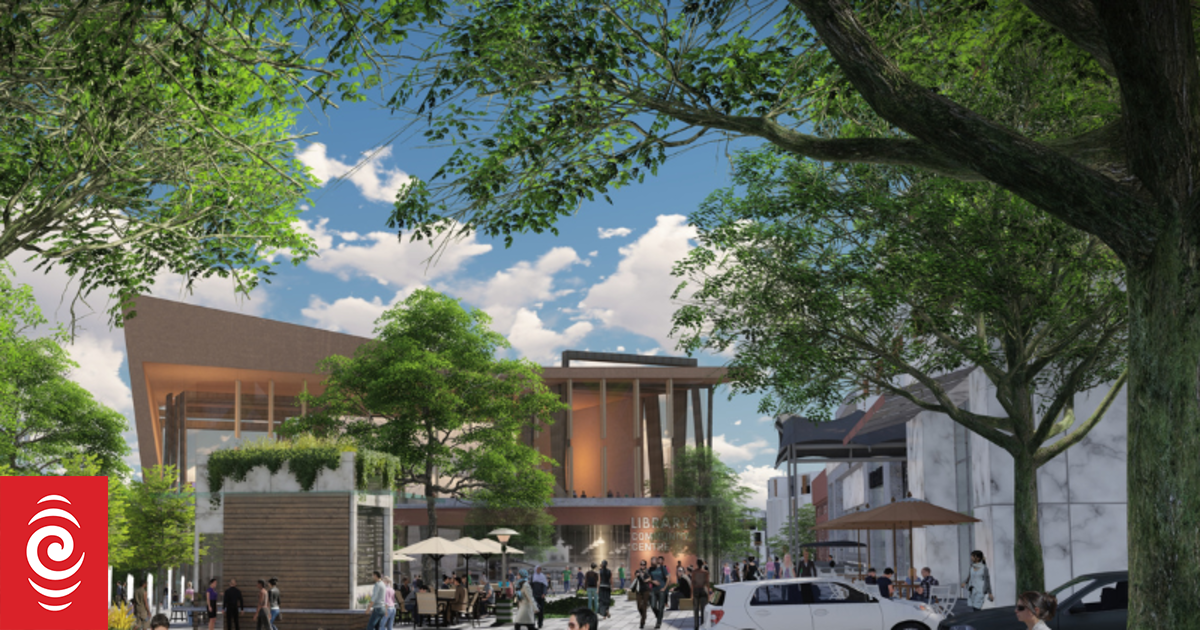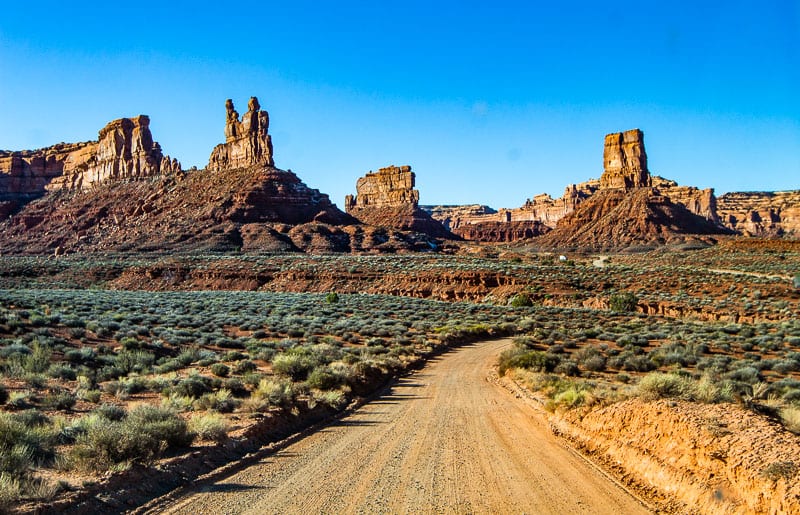
How can you not be intrigued to visit a place with a name that sounds like it belongs in the fertile lands of Ancient Kingdoms? The Valley of the Gods is not a land of pointed pyramids and sun worshippers, but a sandstone valley in the desert in Utah.
To explore the Valley of the Gods, you can enjoy a 17-mile loop scenic drive along graded gravel road surrounded by isolated cedar mesa sandstone buttes and towering pinnacles amidst the wide open spaces.
You can then reach the Natural Bridges National Monument via a 3-mile unsealed road called Moki Dugway, which then connects to the state highway which you drive for about an hour.
It’s the most adventurous way to admire the geological features and unspoiled landscapes of this area and connect these two outstanding monuments.
 Driving through the Valley of the Gods Utah
Driving through the Valley of the Gods Utah
In this guide, we share what you need to know about driving the Valley of the Gods scenic loop, what there is to see, and how you can connect it to Natural Bridges National Monument via the Monki Dugway road.
But first…
Is Valley of the Gods worth visiting?
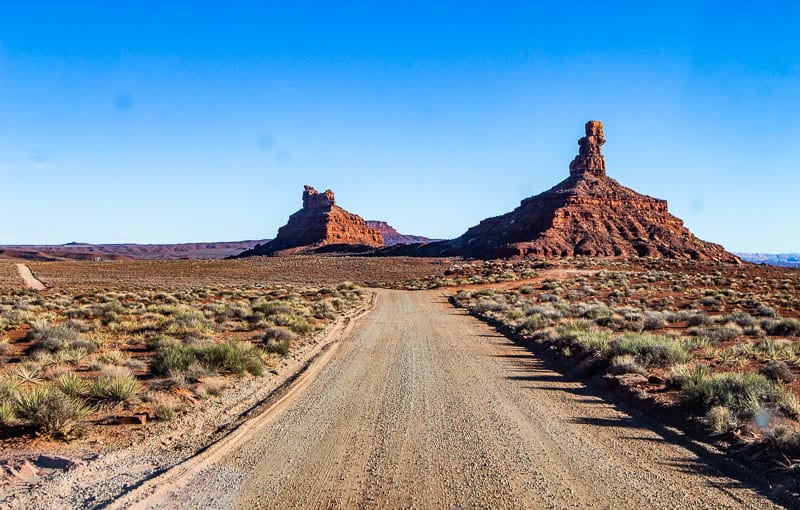 Valley of the Gods
Valley of the Gods
The Valley of the Gods is worth a look if you are traveling slowly in Utah. It does offer a much quieter and more remote experience than Monument Valley.
Plus, it’s free to visit, and you can find some isolated camping spots for true serenity under starry skies.
It was one of the more off-the-beaten-path locations on our American southwest road trip, but it’s only an hour north of the spectacular Monument Valley, where Natural Bridges National Monument is located.
It’s also quite similar to Monument Valley, although not as dramatic, and doesn’t have the same spiritual magnetism. But to be fair, that’s on a whole other level in Monument Valley.
In the Valley of the Gods, we LOVED the expansive views we had all the way back to Monument Valley where we had just come from. The rocky cliffs surrounding us made the perfect playground for the kids.
If you have loads of time and just want a peaceful experience in a stunning location, I’d recommend camping here for several days and just enjoy the views. This is the kind of place it is. Gazing out at those views made it something special.
Where is the Valley of the Gods located?
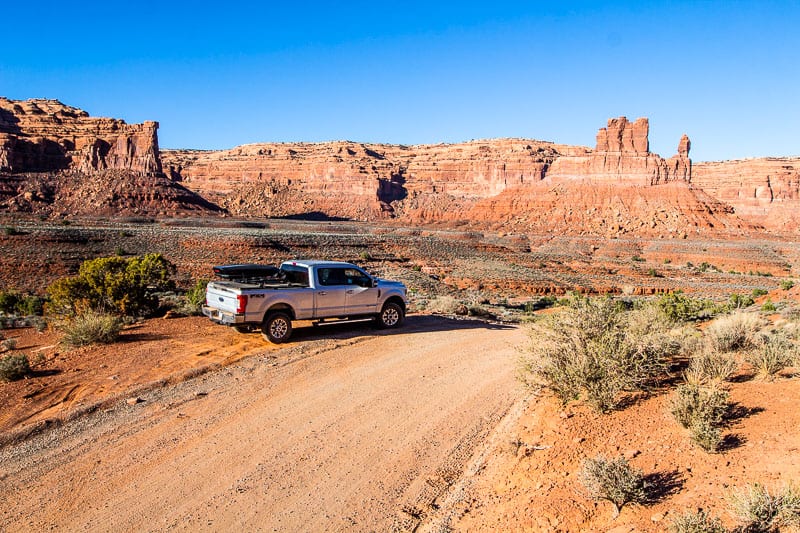
If you are traveling between Moab and Monument Valley, the Valley of the Gods is easy to get to. It’s only about 32 miles from Monument Valley on the Utah/Arizona border.
Drive north along the US-163. Be sure to stop along the way and turn back to get the classic Forest Gump picture of Monument Valley behind you.
If you’re driving into Monument Valley from the north, you won’t miss it. We drove up from the south so had it behind us. I was not paying attention, nor did not realize this was the classic photo moment and so we missed it.
Just north of Mexican Hat is the entrance to the Valley of the Gods on the US-163.
There is also the other other entrance on UT-261, which is where we entered when we did the scenic drive coming from National Bridges National Monument to return to our campsite (more on that below).
Mexican Hat is a tiny town, so you won’t find too much. You’ll have to be completely self sufficient to stay here and there will be no internet (mostly).
The boys in our camping crew did pop down into town to watch some sports and were happy enough with the food at The Swingin Steak, the local pub there, but it was very quiet.
Valley of the Gods Scenic Drive to Natural Bridges National Monument via Monki Dugway
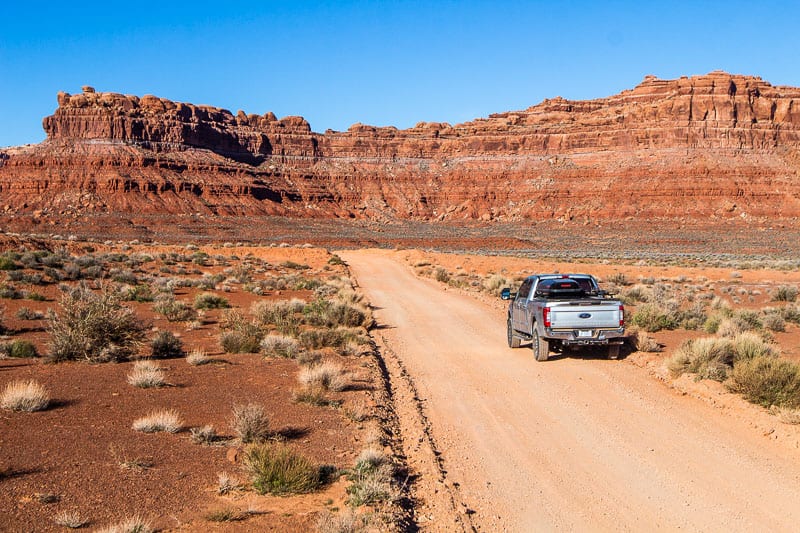 Valley of the Gods Scenic Drive
Valley of the Gods Scenic Drive
There is a 17-mile loop road through the Valley of the Gods Utah, which involves a few hills, washes, and bumpy dirt roads.
It adds to the adventure and the beauty of this USA scenic drive, but you don’t need a 4X4 car to do it in, just drive slowly as you will kick up some dust and stones.
If you are driving a rental car, you may want to hire a 4X4 so you don’t damage the paint with rocks.
The colors and rock formations in the Valley of Gods are stunning. There are no real hiking trails here, which I actually enjoyed for a change.
The following map has the route you will take around Valley of the Gods, before turning off onto Monki Dugway towards Natural Bridges National Monument, with the most famous sandstone monoliths marked.
Devils Window
Before you reach the East entrance, look over to see if you can spot the Devils Window, a clean square cut in a towering rock formation.
Seven Sailors Butte
After you’ve driven through the East entrance to the park, the first butte you see on the Valley of the Gods loop is the Seven Sailors Butte, which is a huge monolith with seven rock formations on the top.
Setting Hen Butte
 Photo Credit: Flickr
Photo Credit: Flickr
The Setting Hen Butte, also known as Franklin Butte, is where the rock formations start to take on a more dramatic shape.
This butte stands mightily against a desolate desert backdrop, with Rooster Butte in the distance.
Battleship Rock

You won’t miss Battleship Rock, a huge red rock formation which towers 600 feet above the valley floor.
Castle Butte
Castle Butte is a 1,737-meter butte, so named because it looks like a giant rock castle.
Lady in the Bathtub

Lastly, look out for the lady in the bathtub, which appears just before you reach the west entrance of the park.
Valley of the Gods opening hours & fees
Valley of the Gods is open year round and does not have any entrance fees.
Camping in Valley of the Gods
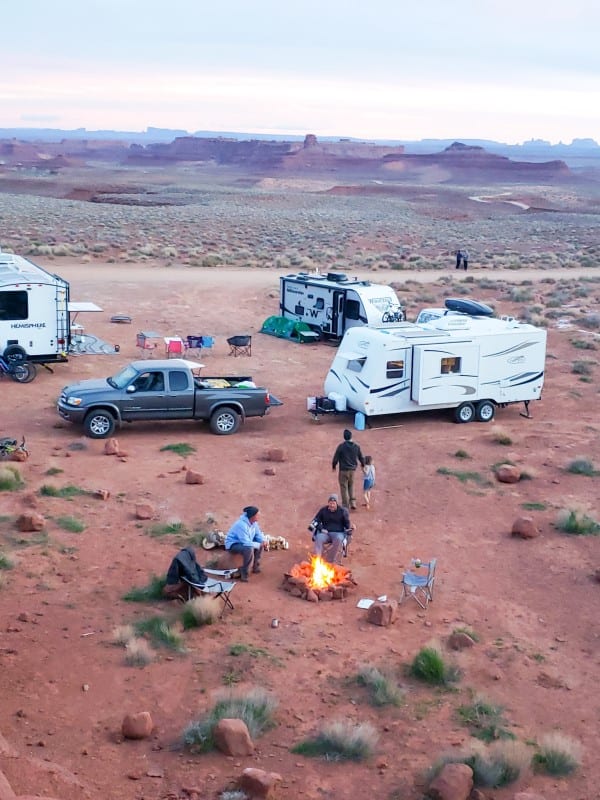
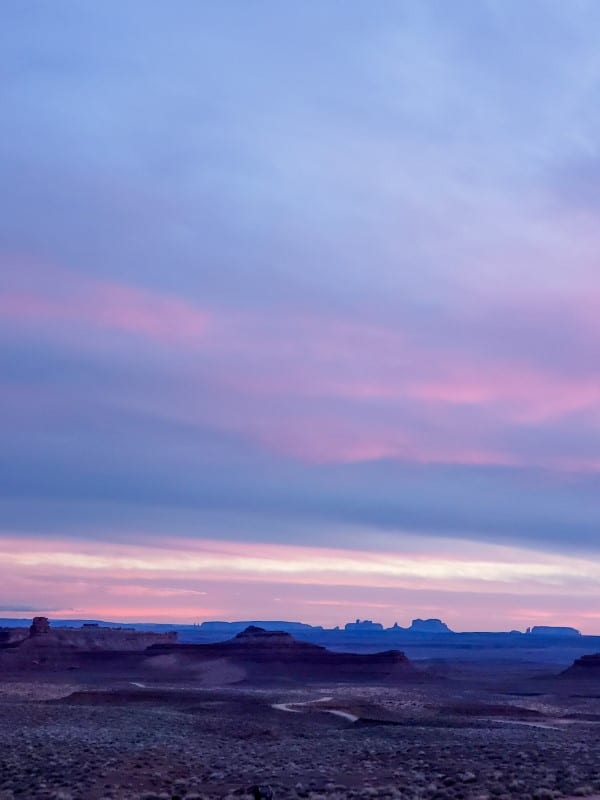
There are loads of free camping spots, but you are better entering from the east entrance (US-163), as the west could be pretty rough for some RVs to get through on that dirt road.
We all agreed we probably wouldn’t have towed our 37-foot travel trailer through, or would have stressed about doing some damage.
Take the drive and find a pullout off the side of the road and your perfect camp spot.
If there are a few of you, you may want to send someone ahead to scout it out. The smaller rig in our crew did just that.
There is no Wi-Fi, so they had to come back and get us, but it worked better than us not knowing the road conditions properly and getting stuck.
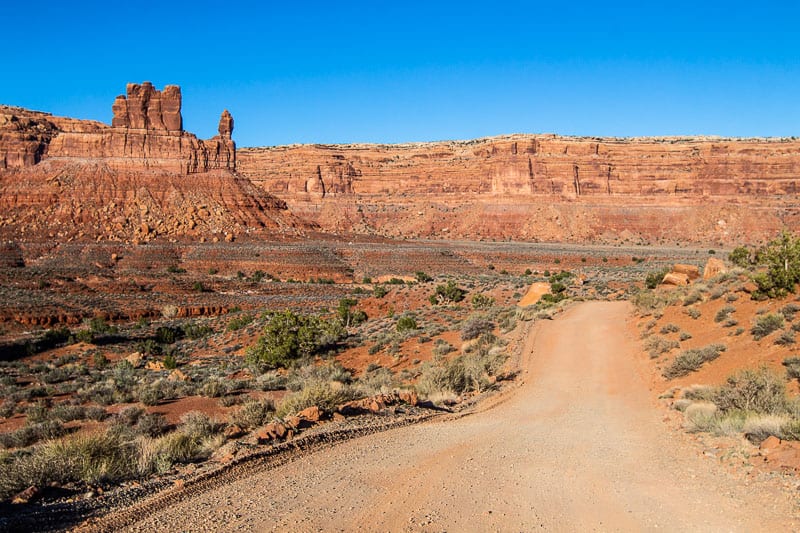
We drove a couple of miles in until we found a lovely secluded spot on the left hand side, it was just on the beginning of the bend in the Valley of the Gods road where it starts to loop around to the west.
Our campsite was nestled into the cliffs, so were beautifully protected and secluded and felt like we were the rulers of the kingdom, especially when we climbed up to the top of the cliffs.
If you have kids and camp in this spot, be vigilant about them being on the road. Cars can come around the bend really quickly and they will not see your kids in time.
Campsites are usually remote with no bathroom or toilets, so be sure to account for this if you plan to camp the night.
You can see the conditions of us driving in from the east side in our video:
Be sure to subscribe to our YouTube channel for more USA travel videos.
Moki Dugway
Natural Bridges National Monument was 45 miles away from Valley of the Gods, and takes about 1 hour 15 minutes to drive.
The Moki Dugway is an incredible bumpy ride up 3 miles of sharp turn switchbacks, before reaching the Utah Highway 261 escarpment.
The very tight switchbacks were a thrill we weren’t expecting. (not suitable for RVs! Go via UT-95 instead). Just another reason to love Utah.
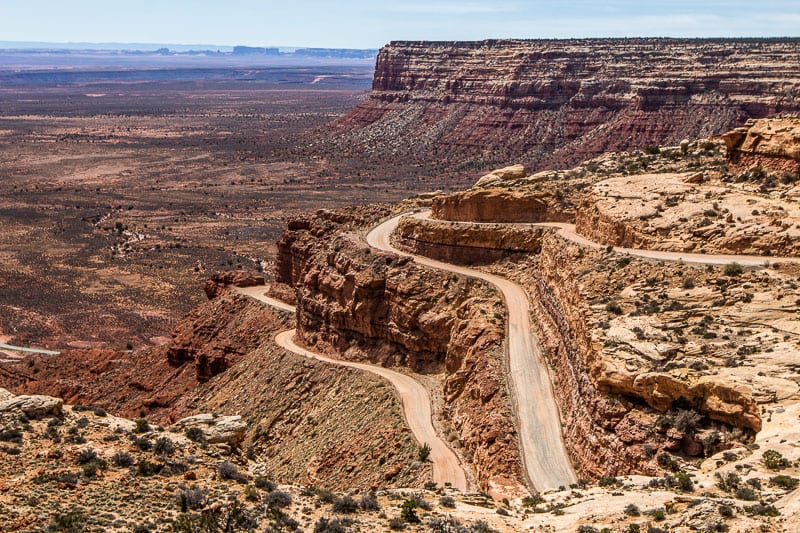 Road up to Natural Bridges from Valley of the Gods
Road up to Natural Bridges from Valley of the Gods
The national monument is located in southeast Utah, off scenic Utah 95 via Utah 275.
From Monument Valley, follow U.S. 163 north to Utah 261 (just past Mexican Hat); at Utah 95, go west to Utah 275.
We came back into Valley of Gods from the West entrance after our visit to Natural Bridges.
Natural Bridges National Monument
Natural Bridges National Monument is another spiritual wonder, sacred to the Hopi and ancestral people who occupied this complex system of canyons from about 500 BC until around AD 1270.
Some of the cliff dwellings of the later Ancestral Puebloans can still be seen today.
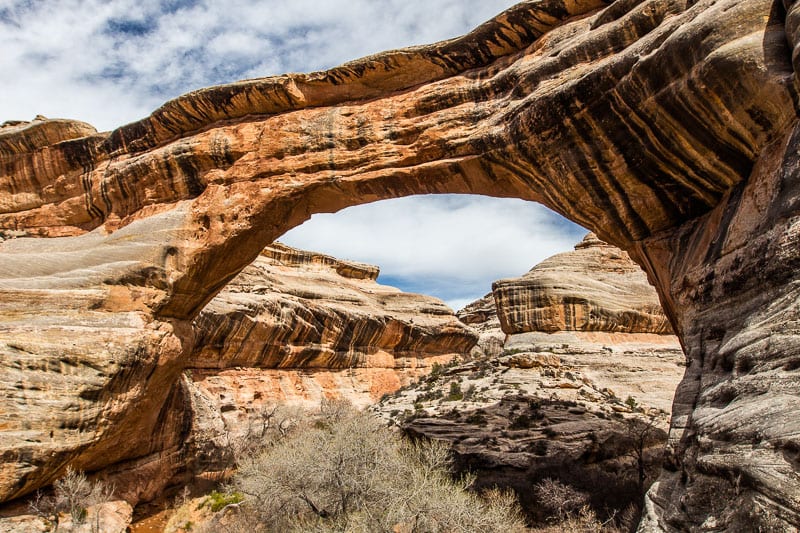 Sipapu Bridge
Sipapu Bridge
Natural Bridges National Monument is has three natural bridges, Kachina, Owachomo, and Sipapu.
Unlike arches, bridges are formed when streams out through canyon walls.
You can visit by way of a one way paved 9-mile scenic drive with view points. Bridge View Drive leads to overlooks and trailheads above the three bridges that are the park’s chief attractions.
Or, you can hike down to each one. All three bridges are accessible by short, steep, hiking trails.
There is a loop walk (10 miles) you can do that connects each natural bridge. That’s one to come back for, perhaps a bit too much with the kids.
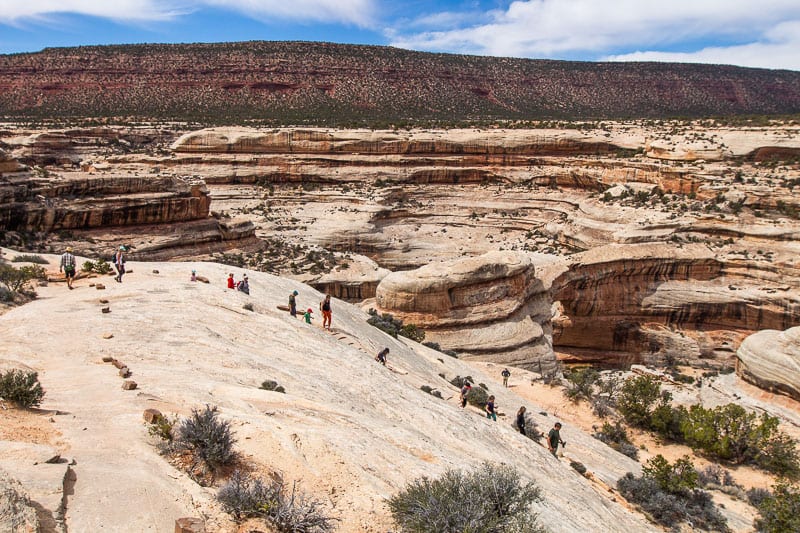 Hiking down to Sipapu Bridge
Hiking down to Sipapu Bridge
It’s a very easy place to visit in just a few hours and makes a great day trip from the Valley of the Gods.
Don’t forget to grab your Junior Rangers book before exploring the Natural Bridges Monument so the kids can do their activities and get their badges.
Entry to the monument is $20 per vehicle or $10 per person.
You can access the monuments with an America the Beautiful national parks pass, which gives you access to more than 2,000 federal recreation sites across the United States for an $80 annual fee.
Sipapu Bridge
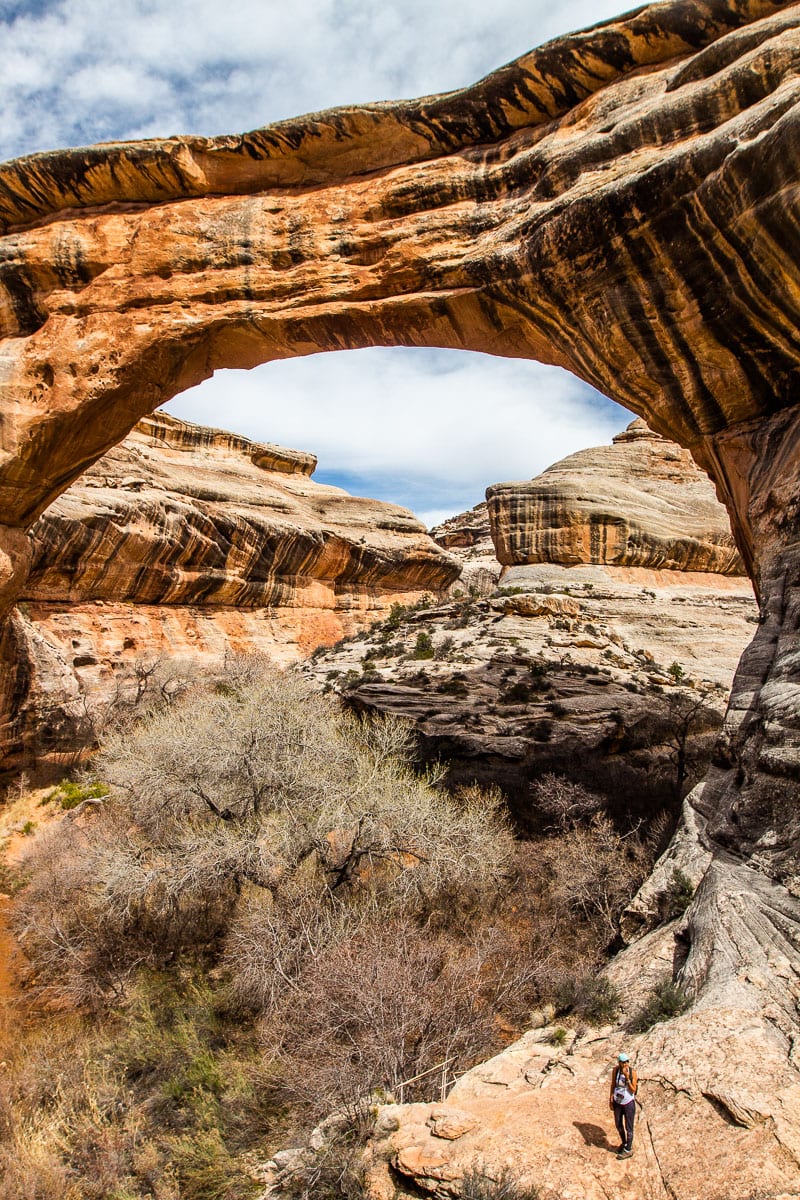 Sipapu Bridge
Sipapu Bridge
Sipapu Bridge is the second largest natural bridge in the world. In Hopi mythology Sipapu means the gateway entryway their ancestors came into this world.
It’s difficult to spot from the canyon rim overlook as it blends so well with the surrounding canyon rocks. As it’s so high it has very little stream erosion.
We hiked 1.2 miles return down into the canyon to Sipapu Bridge, which was a short adventurous hike that involved a few ladders and plenty of views along the way.
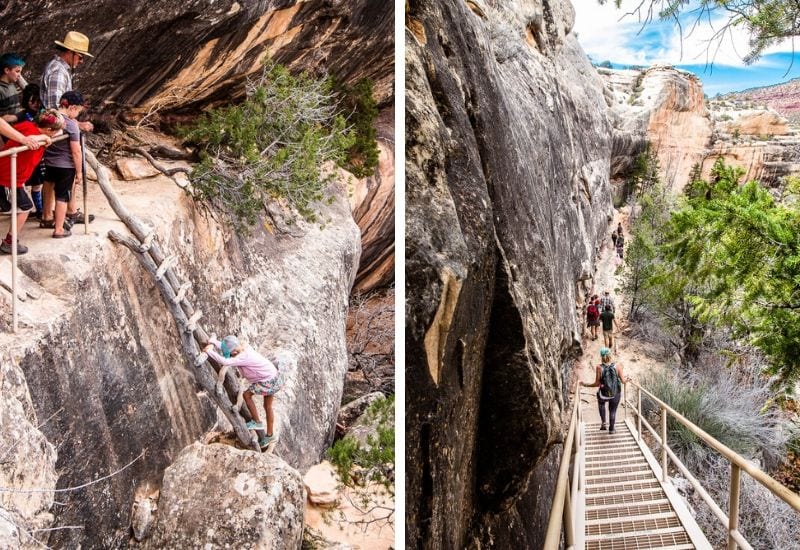 Sipapu Bridge hike
Sipapu Bridge hike
The trail winds along cliff walls which gives sensational views of the White Canyon below. I loved the shady overhang spots and the forested sections of pinons and juniper trees.
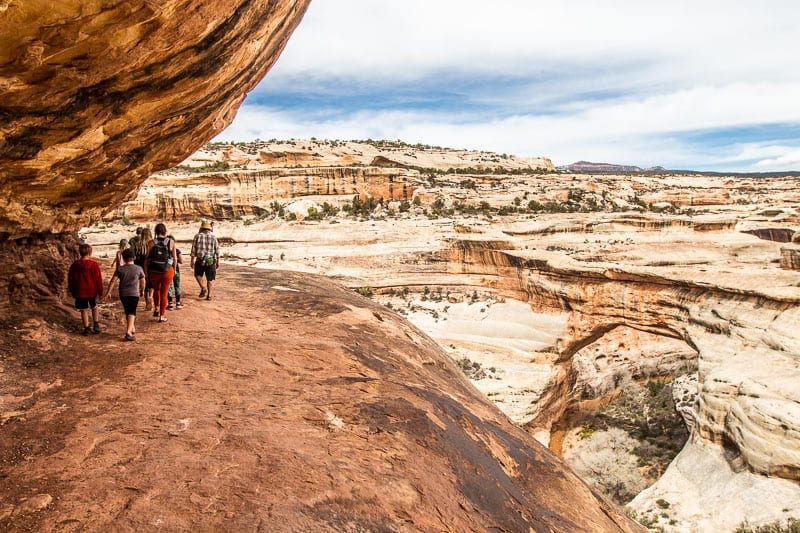 Sipapu Bridge hike in Utah
Sipapu Bridge hike in Utah
Down the bottom you’ll find a small creek lined with cottonwood trees. Pack your picnic and eat under the shade of the bridge by the river. It offers a great perspective of the size of the sandstone natural bridge arching across the sky.
We really enjoyed this hike, and only had time to do the one. I think this would be the pick of the bridges to hike to if you are short on time, or only want to hike to one natural bridge.
Owachomo Bridge
The easiest hike is to the last bridge, Owachomo. It’s only a half mile round trip.
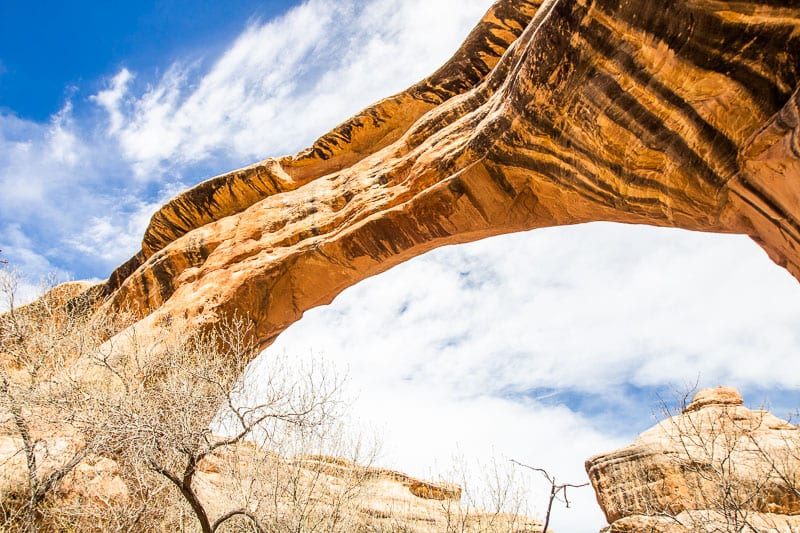 Owachomo Bridge
Owachomo Bridge
Owachomo means rock mound, a feature on top of the bridge’s abutment. Owachomo is the oldest,smallest and thinnest of the bridges and is no longer eroded by water but frost and seeping moisture continues to erode it.
Whatever else you do, leave a little time at the end of the drive and walk the half-mile trail to stand under its massive span.
Kachina Bridge
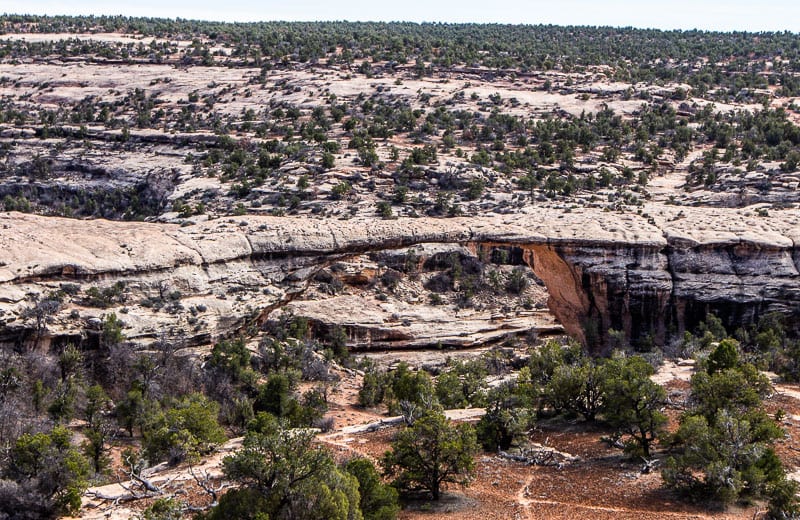 Kachina Bridge
Kachina Bridge
Kachina Bridge is the youngest of the three and is quite big and bulky. Floodwaters passing through White Canyon continues to erode and enlarge the bridge span.
Kachina is named for the petroglyphs on its side that resembles the symbols commonly used on kachina dolls.
You can hike 1.4 miles return to stand beneath the widest, and probably youngest, natural bridge in the park. You can see Kachina Bridge from the viewpoint.
Best time to visit Valley of the Gods and Natural Bridges National Monument
The best time of year to visit is from March until early June, when there is good weather and it’s not too hot for hikers. September and October are also good times to visit for good weather.
Summer’s can get incredible crowded, as well as scorching hot, so you will want to try to avoid July and August if possible.
It’s best to check the weather forecast before visiting, as if it’s not scorching hot it’s freezing cold!
More Places to Visit in Utah
More Places to Visit in the American Southwest
Pin To Save On Pinterest
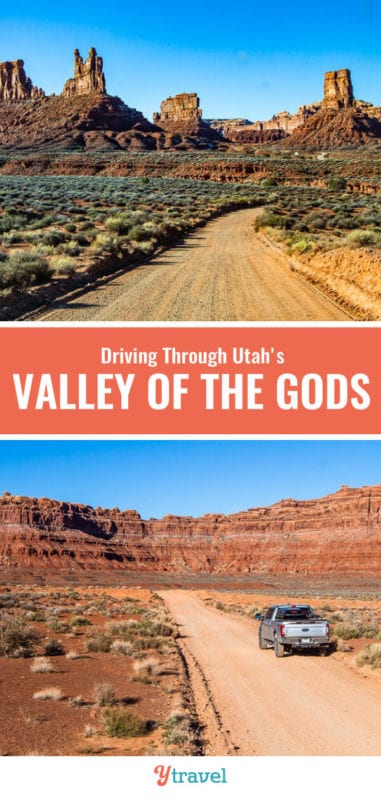
Източник за тази статия
Наши спонсори са:
Български трактори на добри цени при изключително качество





